| Islamic State of Iraq and the Levant |
الدولة الإسلامية في العراق والشام
ad-Dawlah al-Islāmiyah fī ‘l-ʿIrāq wa-sh-Shām
Participant in the Syrian Civil War, Iraq War (2003–2011), Iraqi insurgency,Iraq War (2014–present), Second Libyan Civil War, Boko Haram insurgency, War in North-West Pakistan, War in Afghanistan, Yemeni Civil War, and other conflicts
Primary target of Operation Inherent Resolve and of the military intervention against ISIL: in Syria, Iraq, Libya, and Nigeria. |

|
| Active |
1999–Present
- Joined al-Qaeda: October 2004
- Declaration of an Islamic state in Iraq: 13 October 2006
- Claim of territory in the Levant: 8 April 2013
- Separated from al-Qaeda:[1][2] 3 February 2014,[3]
- Declaration of caliphate: 29 June 2014
- Claim of territory in: Libya, Egypt, Algeria, Saudi Arabia, Yemen: 13 November 2014
- Afghanistan, Pakistan and parts of India: 29 January 2015[4]
- Nigeria: 12 March 2015[5][6]
- North Caucasus: 23 June 2015[7]
|
| Ideology |
Rebel group controlling territory
Current control in
 Syria[14] Syria[14]
 Iraq[14] Iraq[14]
 Libya[15] Libya[15]
 Nigeria[16] Nigeria[16]
 Yemen[17][18] Yemen[17][18] |
| Leaders |
|
| Headquarters |
Ar-Raqqah, Syria
(de facto capital) |
| Area of operations |

Military situation as of 14 August 2015, in the Iraqi, Syrian, and Lebanese conflicts.
Controlled by the Islamic State of Iraq and the Levant
Note: Iraq and Syria contain large desert areas with limited populations. These areas are mapped as under the control of forces holding roads and towns within them.
Detailed map of Syrian Civil War
Detailed map of Iraqi insurgency
Detailed map of Lebanese insurgency
Detailed map of Libyan Civil War
Detailed map of Nigerian insurgency
Detailed map of Yemeni Civil War |
| Strength |
Inside Syria and Iraq
200,000[30] (Kurdish claim)
100,000[31] (Jihadist claim)
20,000–31,000[32] (CIA estimate)
Outside Syria and Iraq
32,600–57,900 (See Military of ISIL for more detailed estimates.)
Estimated total
52,600–257,900 |
| Originated as |
Jamāʻat al-Tawḥīd wa-al-Jihād (1999)[33] |
The Islamic State of Iraq and the Levant (ISIL; Arabic: الدولة الإسلامية في العراق والشام), also known as theIslamic State of Iraq and Syria (ISIS, ) or the Islamic State of Iraq and ash-Sham,[34]Daesh (داعش,Arabic pronunciation: [ˈdaːʕiʃ]), or Islamic State (IS),[35] is a Salafi jihadistextremist militant group and self-proclaimed Islamic state and caliphate, which is led by and mainly composed of Sunni Arabs from Iraq andSyria.[36] As of March 2015, it has control over territory occupied by ten million people[37] in Iraq and Syria, as well as nominal control over small areas of Libya and Nigeria. The group also operates or has affiliates in other parts of the world, including South Asia.[38][39]
The group is known in Arabic as ad-Dawlah al-Islāmiyah fī ‘l-ʿIrāq wa-sh-Shām, leading to the acronym Da’ishor Daesh, the Arabic equivalent of “ISIL”.[34] On 29 June 2014, the group proclaimed itself to be a worldwide caliphate, with Abu Bakr al-Baghdadi being named its caliph,[40] and renamed itself ad-Dawlah al-Islāmiyah (الدولة الإسلامية, “Islamic State” (IS)). As a caliphate, it claims religious, political and military authority over all Muslims worldwide, and that “the legality of all emirates, groups, states, and organisations, becomes null by the expansion of the khilāfah’s [caliphate’s] authority and arrival of its troops to their areas”.[41][42]
The United Nations has held ISIL responsible for human rights abuses and war crimes, and Amnesty International has reported ethnic cleansing by the group on a “historic scale”. The group has been designatedas a terrorist organisation by the United Nations, the European Union, the United Kingdom, the United States, India, Indonesia, Turkey, Saudi Arabia, Syria and other governments. Over 60 countries are directly or indirectly waging war against ISIL.
The group originated as Jama’at al-Tawhid wal-Jihad in 1999, which pledged allegiance to al-Qaeda in 2004. The group participated in the Iraqi insurgency, which had followed the March 2003 invasion of Iraq by Western forces. In January 2006, it joined other Sunni insurgent groups to form the Mujahideen Shura Council, which proclaimed the formation of the Islamic State of Iraq (ISI) in October 2006. After the Syrian Civil War began in March 2011, the ISI, under the leadership of al-Baghdadi, sent delegates into Syria in August 2011. These fighters named themselves Jabhat an-Nuṣrah li-Ahli ash-Shām—al-Nusra Front—and established a large presence in Sunni-majority areas of Syria, within the governorates of Ar-Raqqah, Idlib,Deir ez-Zor, and Aleppo.[43] In April 2013, al-Baghdadi announced the merger of the ISI with al-Nusra Front and that the name of the reunited group was now the Islamic State of Iraq and the Levant (ISIL). However,Abu Mohammad al-Julani and Ayman al-Zawahiri, the leaders of al-Nusra and al-Qaeda respectively, rejected the merger. After an eight-month power struggle, al-Qaeda cut all ties with ISIL on 3 February 2014, citing its failure to consult and “notorious intransigence”.[3][44] In Syria, the group has conducted ground attacks on both government forces and rebel factions in the Syrian Civil War. The group gained prominence after it drove Iraqi government forces out of key cities in western Iraq in an offensive initiated in early 2014. Iraq’s territorial loss almost caused a collapse of the Iraqi government and prompted a renewal of US military action in Iraq.[45]
ISIL is adept at social media, posting Internet videos of beheadings of soldiers, civilians, journalists and aid workers, and is known for its destruction of cultural heritage sites.[46]Muslim leaders around the world have condemned ISIL’s ideology and actions, arguing that the group has strayed from the path of true Islam and that its actions do not reflect the religion’s true teachings or virtues.[47] The group’s adoption of the name “Islamic State” and idea of a caliphate have been widely criticised, with the United Nations, NATO, various governments, and mainstream Muslim groups rejecting both.
The group has had various names since it began.[48]
- The group was founded in 1999 by Jordanian radical Abu Musab al-Zarqawi as Jamāʻat al-Tawḥīd wa-al-Jihād, “The Organisation of Monotheism and Jihad” (JTJ).[33]
- In October 2004, al-Zarqawi swore loyalty to Osama bin Laden and changed the group’s name to Tanẓīm Qāʻidat al-Jihād fī Bilād al-Rāfidayn, “The Organisation of Jihad’s Base in Mesopotamia“, commonly known as al-Qaeda in Iraq (AQI).[48][49] Although the group has never called itself al-Qaeda in Iraq, this has been its informal name over the years.[50]
- In January 2006, AQI merged with several other Iraqi insurgent groups to form the Mujahideen Shura Council.[51] Al-Zarqawi was killed in June 2006.
- On 12 October 2006, the Mujahideen Shura Council merged with several more insurgent factions, and on 13 October the establishment of the ad-Dawlah al-ʻIraq al-Islāmiyah, also known as the Islamic State of Iraq (ISI), was announced.[52] The leaders of this group were Abu Abdullah al-Rashid al-Baghdadi and Abu Ayyub al-Masri.[53] After they were killed in a US–Iraqi operation in April 2010, Abu Bakr al-Baghdadi became the new leader of the group.
- On 8 April 2013, having expanded into Syria, the group adopted the name Islamic State of Iraq and al-Sham, which more fully translates as Islamic State of Iraq and the Levant[citation needed] or Islamic State of Iraq and Syria.[54][55][56] These names are translations of the Arabic name ad-Dawlah al-Islāmīyah fī-l-ʻIrāq wa-sh-Shām,[57][58]al-Shām being a description of the Levant or Greater Syria.[34] The translated names are commonly abbreviated as ISIL or ISIS, with a debate over which of these acronyms should be used.[34][58]The Washington Post concluded that the distinction between the two “is not so great”.[34]
- The name Daʿish is often used by ISIL’s Arabic-speaking detractors. It is based on the Arabic letters Dāl, alif, ʻayn, and shīn, which form the acronym (داعش) of ISIL’s Arabic name al-Dawlah al-Islamīyah fī al-ʻIrāq wa-al-Shām.[59][60] There are many spellings of this acronym, with Daesh gaining acceptance. ISIL considers the name Da’ish derogatory, because it sounds similar to the Arabic words Daes, “one who crushes something underfoot”, and Dahes, “one who sows discord”.[61][62] ISIL also reportedly uses flogging as a punishment for those who use the name in ISIL-controlled areas.[63][64] In 2015, over 120 British parliamentarians asked the BBC to use Daesh, following the example of John Kerry and Laurent Fabius.[61][65]
- On 14 May 2014, the United States Department of State announced its decision to use “Islamic State of Iraq and the Levant” (ISIL) as the group’s primary name.[59]However, in late 2014, top US officials shifted toward Daesh, since it was the preferred term used by their Arab allies.[61]
- On 29 June 2014, the group renamed itself ad-Dawlah al-Islāmiyah (الدولة الإسلامية, “Islamic State” (IS)) and declared it a worldwide caliphate.[40][66][67] Accordingly, the “Iraq and Shām” was removed from all official deliberations and communications, and the official name became the Islamic State from the date of the declaration. The name “Islamic State” and the claim of a caliphate have been widely criticised, with the UN, various governments, and mainstream Muslim groups refusing to use it.[65][68][69][70][71][72][73][74]
History[edit]
Foundation, 1999–2006[edit]
Following the 2003 invasion of Iraq, the Jordanian Salafi jihadistAbu Musab al-Zarqawi and his militant group Jama’at al-Tawhid wal-Jihad, founded in 1999, achieved notoriety in the early stages of the Iraqi insurgency for the suicide attacks on Shia Islamicmosques, civilians, Iraqi government institutions and Italian soldiers partaking in the US-led ‘Multi-National Force‘. Al-Zarqawi’s group officially pledged allegiance to Osama bin Laden‘s al-Qaeda network in October 2004, changing its name to Tanzim Qaidat al-Jihad fi Bilad al-Rafidayn (تنظيم قاعدة الجهاد في بلاد الرافدين, “Organisation of Jihad’s Base in Mesopotamia“), also known as al-Qaeda in Iraq (AQI).[1][75][76] Attacks by the group on civilians, Iraqi government and security forces, foreign diplomats and soldiers, and American convoys continued with roughly the same intensity. In a letter to al-Zarqawi in July 2005, al-Qaeda’s then deputy leaderAyman al-Zawahiri outlined a four-stage plan to expand the Iraq War. The plan included expelling US forces from Iraq, establishing an Islamic authority as a caliphate, spreading the conflict to Iraq’s secular neighbours, and clashing with Israel, which the letter says “was established only to challenge any new Islamic entity”.[77]

Iraqi insurgents in 2006
In January 2006, AQI joined with several smaller Iraqi insurgent groups under an umbrella organisation called the Mujahideen Shura Council (MSC). According to Brian Fishman, this was little more than a media exercise and an attempt to give the group a more Iraqi flavour, and perhaps to distance al-Qaeda from some of al-Zarqawi’s tactical errors, more notably the 2005 bombings by AQI of three hotels in Amman.[78] On 7 June 2006, a US airstrike killed al-Zarqawi, who was succeeded as leader of the group by the Egyptian militant Abu Ayyub al-Masri.[79][80]
On 12 October 2006, the MSC united with three smaller groups and six Sunni Islamic tribes to form the “Mutayibeen Coalition”. It swore by Allah “to rid Sunnis from the oppression of the rejectionists (Shi’ite Muslims) and the crusader occupiers … to restore rights even at the price of our own lives … to make Allah’s word supreme in the world, and to restore the glory of Islam”.[81][82] A day later, the MSC declared the establishment of the Islamic State of Iraq (ISI), comprising Iraq’s six mostly Sunni Arab governorates.[83]Abu Omar al-Baghdadi was announced as its emir,[52][84] and al-Masri was given the title of Minister of War within the ISI’s ten-member cabinet.[85]
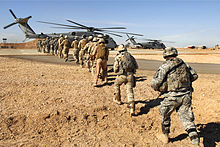
A joint US–
Iraqi Army training exercise
near Ramadi in November 2009. The Islamic State of Iraq had declared the city to be its capital.
As Islamic State of Iraq, 2006–13[edit]
According to a study compiled by United States intelligence agencies in early 2007, the ISI—also known as AQI—planned to seize power in the central and western areas of Iraq and turn it into a Sunni caliphate.[86] The group built in strength and at its height enjoyed a significant presence in the Iraqi governorates of Al Anbar, Diyala and Baghdad, claiming Baqubah as a capital city.[87][88][89][90]
The Iraq War troop surge of 2007 supplied the United States military with more manpower for operations targeting the group, resulting in dozens of high-level AQI members being captured or killed.[91]
Between July and October 2007, al-Qaeda in Iraq was reported to have lost its secure military bases in Al Anbar province and theBaghdad area.[92] During 2008, a series of US and Iraqi offensives managed to drive out AQI-aligned insurgents from their former safe havens, such as the Diyala and Al Anbar governorates, to the area of the northern city of Mosul.[93]
By 2008, the ISI was describing itself as being in a state of “extraordinary crisis”.[94] Its violent attempts to govern its territory led to a backlash from Sunni Arab Iraqis and other insurgent groups and a temporary decline in the group, which was attributable to a number of factors,[95] notably the Anbar Awakening.
In late 2009, the commander of US forces in Iraq, General Ray Odierno, stated that the ISI “has transformed significantly in the last two years. What once was dominated by foreign individuals has now become more and more dominated by Iraqi citizens”.[96] On 18 April 2010, the ISI’s two top leaders, Abu Ayyub al-Masri and Abu Omar al-Baghdadi, were killed in a joint US-Iraqi raid near Tikrit.[97] In a press conference in June 2010, General Odierno reported that 80% of the ISI’s top 42 leaders, including recruiters and financiers, had been killed or captured, with only eight remaining at large. He said that they had been cut off from al-Qaeda’s leadership in Pakistan.[98][99][100]
On 16 May 2010, Abu Bakr al-Baghdadi was appointed the new leader of the Islamic State of Iraq.[101][102] Al-Baghdadi replenished the group’s leadership, many of whom had been killed or captured, by appointing former Ba’athist military and intelligence officers who had served during Saddam Hussein‘s rule.[103] These men, nearly all of whom had spent time imprisoned by the US military, came to make up about one third of Baghdadi’s top 25 commanders. One of them was a former colonel, Samir al-Khlifawi, also known as Haji Bakr, who became the overall military commander in charge of overseeing the group’s operations.[104][105] Al-Khlifawi was instrumental in doing the ground work that led to the growth of ISIL.[106]
Former Ba’athists in ISI are “true believers” in the religious ideology they espoused and not secularists using ISI as a front for their cause.[107] Islamification policies started by Saddam after 1989 resulted in the spread of a hybrid ”Ba’athist-Salafism”.[108]
In July 2012, al-Baghdadi released an audio statement online announcing that the group was returning to former strongholds from which US troops and the Sons of Iraq had driven them in 2007 and 2008.[109] He also declared the start of a new offensive in Iraq called Breaking the Walls, aimed at freeing members of the group held in Iraqi prisons.[109]Violence in Iraq had begun to escalate in June 2012, primarily with AQI’s car bomb attacks, and by July 2013, monthly fatalities exceeded 1,000 for the first time since April 2008.[110]
Syrian Civil War[edit]
In March 2011, protests began in Syria against the government of Bashar al-Assad. In the following months, violence between demonstrators and security forces led to a gradual militarisation of the conflict.[111] In August, al-Baghdadi began sending Syrian and Iraqi ISI members experienced in guerilla warfare across the border into Syria to establish an organisation there. Led by a Syrian known as Abu Muhammad al-Julani, this group began to recruit fighters and establish cells throughout the country.[112][113] In January 2012, the group announced its formation as Jabhat al-Nusra li Ahl as-Sham—Jabhat al-Nusra—more commonly known as al-Nusra Front. Al-Nusra grew rapidly into a capable fighting force, with popular support among Syrians opposed to the Assad government.[112]
As Islamic State of Iraq and the Levant, 2013–14[edit]
On 8 April 2013, al-Baghdadi released an audio statement in which he announced that al-Nusra Front had been established, financed, and supported by the Islamic State of Iraq,[114] and that the two groups were merging under the name “Islamic State of Iraq and Al-Sham”.[54] Al-Julani issued a statement denying the merger, and complaining that neither he nor anyone else in al-Nusra’s leadership had been consulted about it.[115] In June 2013, Al Jazeera reported that it had obtained a letter written by al-Qaeda’s leaderAyman al-Zawahiri, addressed to both leaders, in which he ruled against the merger, and appointed an emissary to oversee relations between them to put an end to tensions.[116]The same month, al-Baghdadi released an audio message rejecting al-Zawahiri’s ruling and declaring that the merger was going ahead.[117] The ISIL campaign to free imprisoned ISIL members culminated in July 2013, with the group carrying out simultaneous raids on Taji and Abu Ghraib prisons, freeing more than 500 prisoners, many of them veterans of the Iraqi insurgency.[110][118] In October 2013, al-Zawahiri ordered the disbanding of ISIL, putting al-Nusra Front in charge of jihadist efforts in Syria,[119] but al-Baghdadi contested al-Zawahiri’s ruling on the basis of Islamic jurisprudence,[117] and his group continued to operate in Syria. In February 2014, after an eight-month power struggle, al-Qaeda disavowed any relations with ISIL.[44]
According to journalist Sarah Birke, there are “significant differences” between al-Nusra Front and ISIL. While al-Nusra actively calls for the overthrow of the Assad government, ISIL “tends to be more focused on establishing its own rule on conquered territory”. ISIL is “far more ruthless” in building an Islamic state, “carrying out sectarian attacks and imposing sharia law immediately”. While al-Nusra has a “large contingent of foreign fighters”, it is seen as a home-grown group by many Syrians; by contrast, ISIL fighters have been described as “foreign ‘occupiers'” by many Syrian refugees.[120] It has a strong presence in central and northern Syria, where it has instituted sharia in a number of towns.[120] The group reportedly controlled the four border towns of Atmeh, al-Bab, Azaz and Jarablus, allowing it to control the entrance and exit from Syria into Turkey.[120]Foreign fighters in Syria include Russian-speaking jihadists who were part of Jaish al-Muhajireen wal-Ansar (JMA).[121] In November 2013, the JMA’s Chechen leader Abu Omar al-Shishani swore an oath of allegiance to al-Baghdadi;[122] the group then split between those who followed al-Shishani in joining ISIL and those who continued to operate independently in the JMA under new leadership.[123]
In January 2014, rebels affiliated with the Islamic Front and the US-trained Free Syrian Army[124] launched an offensive against ISIL militants in and around the city ofAleppo.[125][126] In May 2014, Ayman al-Zawahiri ordered the al-Nusra Front to stop its attacks on its rival, ISIL.[127][not in citation given] In June 2014, after continued fighting between the two groups, al-Nusra’s branch in the Syrian town of Al-Bukamal pledged allegiance to ISIL.[128][129] In mid-June 2014, ISIL captured the Trabil crossing on the Jordan–Iraq border,[130] the only border crossing between the two countries.[131] ISIL has received some public support in Jordan, albeit limited, partly owing to state repression there.[132] ISIL has undertaken a recruitment drive in Saudi Arabia,[133] where tribes in the north are linked to those in western Iraq and eastern Syria.[134]
As Islamic State, 2014–present[edit]
On 29 June 2014, the organisation proclaimed itself to be a worldwide caliphate.[135] Abu Bakr al-Baghdadi—known by his supporters as Amir al-Mu’minin, Caliph Ibrahim—was named its caliph, and the group renamed itself ad-Dawlah al-Islāmiyah (الدولة الإسلامية, “Islamic State” (IS)).[40] As a “Caliphate”, it claims religious, political and military authority over all Muslims worldwide.[42][136] The concept of it being a caliphate and the name “Islamic State” have been rejected by governments and Muslim leaders worldwide.[68][69][70][71][72][73][74]
In June and July 2014, Jordan and Saudi Arabia moved troops to their borders with Iraq, after Iraq lost control of, or withdrew from, strategic crossing points that then came under the control of ISIL, or tribes that supported ISIL.[131][137] There was speculation that Iraqi Prime Minister Nouri al-Maliki had ordered a withdrawal of troops from the Iraq–Saudi crossings in order “to increase pressure on Saudi Arabia and bring the threat of ISIS over-running its borders as well”.[134]
In July 2014, ISIL recruited more than 6,300 fighters, according to the Syrian Observatory for Human Rights, some of whom were thought to have previously fought for the Free Syrian Army.[138] On 23 July 2014, Abu Sayyaf leader Isnilon Totoni Hapilon and some masked men swore loyalty to al-Baghdadi in a video, giving ISIL a presence in the Philippines.[39][139] In September 2014, the group began kidnapping people for ransoming, in the name of ISIL.[140]
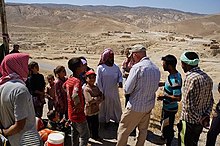
Yazidi refugees and American aid workers on Mount Sinjar in August 2014
On 3 August 2014, ISIL captured the cities of Zumar, Sinjar, and Wana in northern Iraq.[141] The need for food and water for thousands ofYazidis, who fled up a mountain out of fear of approaching hostile ISIL militants, and the threat of genocide to Yazidis and others as announced by ISIL, in addition to protecting Americans in Iraq and supporting Iraq in its fight against the group, were reasons for the 2014 American intervention in Iraq on 7 August, to aid the Yazidis stranded on Mount Sinjar[142] and to start an aerial bombing campaign in Iraq on 8 August.
On 11 October 2014, it was reported that ISIL had dispatched 10,000 militants from Syria and Mosul to capture the Iraqi capital city ofBaghdad,[143] and Iraqi Army forces and Anbar tribesmen threatened to abandon their weapons if the US did not send in ground troops to halt ISIL’s advance.[144] On 13 October, ISIL fighters advanced to within 25 kilometres (16 mi) of Baghdad Airport.[145]
At the end of October 2014, 800 radical militants gained partial control of the Libyan city of Derna and pledged their allegiance to Abu Bakr al-Baghdadi, thus making Derna the first city outside Syria and Iraq to be a part of the “Islamic State Caliphate”.[146] On 2 November 2014, according to the Associated Press, in response to the coalition airstrikes, representatives from Ahrar ash-Sham attended a meeting withal-Nusra Front, the Khorasan Group, ISIL, and Jund al-Aqsa, which sought to unite these hard-line groups against the US-led coalition and moderate Syrian rebel groups.[147]However, by 14 November 2014, it was revealed that the negotiations had failed.[148] On 10 November 2014, a major faction of the Egyptian militant group Ansar Bait al-Maqdisalso pledged its allegiance to ISIL.[149]

Coalition airstrike on ISIL position, October 2014
ISIL has often used water as a weapon of war. The closing of the gates of the smaller Nuaimiyah dam in Fallujah in April 2014, resulted in the flooding of surrounding regions, while water supply was cut to the Shia-dominated south. Around 12,000 families lost their homes and 200 km² of villages and fields were either flooded or dried up. The economy of the region also suffered with destruction of cropland and electricity shortages.[150]
In mid-January 2015, a Yemeni official said that ISIL had “dozens” of members in Yemen, and that they were coming into direct competition with al-Qaeda in the Arabian Peninsula with their recruitment drive.[151]
In January 2015, Afghan officials confirmed that ISIL had a military presence in Afghanistan,[152] recruiting over 135 militants by late January. However, by the end of January 2015, 65 of the militants were either captured or killed by the Taliban, and ISIL’s top Afghan recruiter, Mullah Abdul Rauf, was killed in a US drone strike in February 2015.[153][154][155]
In late January 2015, it was reported that ISIL members had infiltrated the European Union and disguised themselves as civilian refugees who were emigrating from the war zones of Iraq and the Levant.[156] An ISIL representative claimed that ISIL had successfully smuggled 4,000 fighters, and that the smuggled fighters were planning attacks in Europe in retaliation for the airstrikes carried out against ISIL targets in Iraq and Syria. However, experts believe that this claim was exaggerated to boost their stature and spread fear, although they acknowledged that some Western countries were aware of the smuggling.[157]
In early February 2015, ISIL militants in Libya managed to capture part of the countryside to the west of Sabha, and later, an area encompassing the cities of Sirte, Nofolia, and a military base to the south of both cities.
In February 2015, it was reported that some Ansar al-Sharia in Yemen members had broken from al-Qaeda and pledged allegiance to ISIL.[158]
On 16 February 2015, Egypt conducted airstrikes in Libya, in retaliation against ISIL’s beheading of 21 Egyptian Christians. By the end of that day, 64 ISIL militants in Libya had been killed by the airstrikes, including 50 militants in Derna.[159] However, by early March, ISIL had captured additional Libyan territory, including a city to the west of Derna, additional areas near Sirte, a stretch of land in southern Libya, some areas around Benghazi, and an area to the east of Tripoli.
On 7 March 2015, Boko Haram swore formal allegiance to ISIL, giving ISIL an official presence in Nigeria, Niger, Chad and Cameroon.[16][6][160] On 13 March 2015, a group of militants from the Islamic Movement of Uzbekistan swore allegiance to ISIL;[161] the group released another video on 31 July 2015 containing its spiritual leader also pledging allegiance.[162] On 30 March 2015, the senior sharia official of Ansar al-Sharia in Libya, Abdullah Al-Libi, defected to ISIL.[163]
From March through mid-April 2015, advances by Iraqi forces into ISIL-controlled territory were focused on Tikrit and the Saladin Governorate.[164]
In June 2015, the US Deputy Secretary of State announced that ISIL had lost more than 10,000 members in airstrikes over the preceding nine months.[165]
In the same month, three simultaneous attacks occurred: two hotels were attacked by gunmen in Tunisia, a man was decapitated in France, and a bomb was detonated at a Shia mosque in Kuwait. ISIL claimed responsibility for the attacks in Kuwait and Tunisia. ISIL flags were present at the crime scene in France, but ISIL has not claimed responsibility for the attack.
Worldwide caliphate aims[edit]
Since at least 2004, a significant goal of the group has been the foundation of a SunniIslamic state.[166][167] Specifically, ISIL has sought to establish itself as a caliphate, an Islamic state led by a group of religious authorities under a supreme leader—the caliph—who is believed to be the successor to Muhammad.[168] In June 2014, ISIL published a document in which it claimed to have traced the lineage of its leader al-Baghdadi back to Muhammad,[168] and upon proclaiming a new caliphate on 29 June, the group appointed al-Baghdadi as its caliph. As caliph, he demands the allegiance of all devout Muslims worldwide, according to Islamic jurisprudence (fiqh).[169]
When the caliphate was proclaimed, ISIL stated: “The legality of all emirates, groups, states and organisations becomes null by the expansion of the khilafah’s [caliphate’s] authority and arrival of its troops to their areas.”[168] This was a rejection of the political divisions in the Middle East that were established by Western powers during World War I in the Sykes–Picot Agreement.[170][171][172]
Ideology and beliefs[edit]
ISIL is a Salafi group.[173][174] It follows an extremist interpretation of Islam, promotes religious violence, and regards those who do not agree with its interpretations as infidels orapostates.[8] According to Hayder al Khoei, ISIL’s philosophy is represented by the symbolism in the Black Standard variant of the legendary battle flag of Muhammad that it has adopted: the flag shows the Seal of Muhammad within a white circle, with the phrase above it, “There is no God but Allah“.[175] Such symbolism has been said to point to ISIL’s belief that it represents the restoration of the caliphate of early Islam, with all the political, religious and eschatological ramifications that this would imply.[176]
According to some observers, ISIL emerged from the ideology of the Muslim Brotherhood, the first post-Ottoman Islamist group dating back to the late 1920s in Egypt.[177] It adheres to global jihadist principles and follows the hard-line ideology of al-Qaeda and many other modern-day jihadist groups.[8][3] However, other sources trace the group’s roots to Wahhabism. The New York Times wrote:
For their guiding principles, the leaders of the Islamic State … are open and clear about their almost exclusive commitment to the Wahhabi movement of Sunni Islam. The group circulates images of Wahhabi religious textbooks from Saudi Arabia in the schools it controls. Videos from the group’s territory have shown Wahhabi texts plastered on the sides of an official missionary van.[178]
According to The Economist, dissidents in the ISIL capital of Ar-Raqqah report that “all 12 of the judges who now run its court system … are Saudis”. Saudi Wahhabi practices also followed by the group include the establishment of religious police to root out “vice” and enforce attendance at salat prayers, the widespread use of capital punishment, and the destruction or re-purposing of any non-Sunni religious buildings.[179]Bernard Haykel has described al-Baghdadi’s creed as “a kind of untamed Wahhabism”.[178]
ISIL aims to return to the early days of Islam, rejecting all innovations in the religion, which it believes corrupts its original spirit. It condemns later caliphates and the Ottoman Empire for deviating from what it calls pure Islam,[180] and seeks to revive the original Wahhabi project of the restoration of the caliphate governed by strict Salafist doctrine. Following Salafi-Wahhabi tradition, ISIL condemns the followers of secular law as disbelievers, putting the current Saudi government in that category.[181]
Salafists such as ISIL believe that only a legitimate authority can undertake the leadership of jihad, and that the first priority over other areas of combat, such as fighting non-Muslim countries, is the purification of Islamic society. For example, ISIL regards the Palestinian Sunni group Hamas as apostates who have no legitimate authority to lead jihad and fighting Hamas as the first step toward confrontation with Israel.[178][182]
Eschatology[edit]
One difference between ISIL and other Islamist and jihadist movements is its emphasis on eschatology and apocalypticism, and its belief that the arrival of the Mahdi is near. ISIL believes that it will defeat the army of “Rome” at the town of Dabiq, in fulfilment of prophecy.[183] Following its interpretation of the Hadith of the Twelve Successors, it also believes there will be only four more legitimate caliphs after al-Baghdadi.[183]
Territorial claims and international presence[edit]

Areas controlled (as of 4 May 2015) Remaining territory in countries with ISIL presence
In Iraq and Syria, ISIL uses many of those countries’ existing Governorate boundaries to subdivide its claimed territory; it calls these divisions wilayah or provinces.[184] As of June 2015, it had established official branches in Libya, Egypt (Sinai Peninsula), Saudi Arabia, Yemen, Algeria, Afghanistan, Pakistan, Nigeria and the North Caucasus.[185] Outside Iraq and Syria, it controls territory in only Sinai, Afghanistan, and Libya.[186] ISIL also has members in Morocco, Lebanon, Jordan, Turkey, Israel and Palestine, but does not have official branches in those areas.[187]
Libyan Provinces[edit]

Current military situation in Libya:
ISIL divides Libya into three historical provinces, claiming authority over Cyrenaica in the east, Fezzan in the desert south, and Tripolitaniain the west, around its capital Tripoli.[188]
On 5 October 2014, the Shura Council of Islamic Youth and other militants in Libya were absorbed and designated the Cyrenaica Province of ISIL.[189][190] The Libyan branch of ISIL has been the most active and successful of all ISIL branches outside Iraq and Syria. It has been active mainly around Derna and Gaddafi’s hometown Sirte.[191][192]
On 4 January 2015, ISIL forces in Libya seized control of the eastern countryside of Sabha, executing 14 Libyan soldiers in the process.[193][194] They temporarily controlled part of Derna before being driven out in Mid 2015.[195] Reports from Sirte suggest ISIL militants based there are a mixture of foreign fighters and ex-Gaddafi loyalists.[196] An initiative between pro-Dawn forces associated with Misrata and Operation Dawn clashed with these IS militants in Sirte.[197][198][199] Fighting between Libya Dawn forces and ISIL militants was also reported in the Daheera area west of the city of Sirte, and at the Harawa vicinity east of Sirte.[200]
ISIL uses its bases in Libya to smuggle its fighters into the European Union posing as refugees.[201][202]
Sinai Province[edit]
On 10 November 2014, many members of the group Ansar Bait al-Maqdis took an oath of allegiance to al-Baghdadi.[149] Following this, the group assumed the designation Wilayat Sinai (Sinai Province).[189][203][204][205] They are estimated to have 1,000–2,000 fighters.[39][206]A faction of the Sinai group also operates in the Gaza Strip, calling itself the Islamic State in Gaza.[207] On 19 August 2015, members of the group bombed an Egyptian security headquarters building in northern Cairo, injuring 30 people.[208]
Algerian Province[edit]
Members of Jund al-Khilafah swore allegiance to ISIL in September 2014.[209] ISIL in Algeria gained notoriety when it beheaded French tourist Herve Gourdel in September 2014. Since then, the group has largely been silent, with reports that its leader Khalid Abu-Sulayman was killed by Algerian forces in December 2014.[185]
Khorasan Province[edit]
On 26 January 2015, a new Wilayat (Province) was announced, with Hafiz Saeed Khan named as Wāli (Governor) and Abdul Rauf as his deputy after both swore an oath of allegiance to al-Baghdadi. The province includes Afghanistan, Pakistan, and “other nearby lands”.[4][210][211][212]
On 9 February 2015, Mullah Abdul Rauf was killed by a NATO airstrike.[213] On 18 March 2015, Hafiz Wahidi, ISIL’s replacement deputy Emir in Afghanistan, was killed by the Afghan Armed Forces, along with nine other ISIL militants who were accompanying him.[214] In June, Reuters received reports that villages in several districts of Afghanistan’s eastern Nangarhar Province had been captured from the Taliban by ISIL sympathisers.[215] On 10 July 2015, Hafiz Saeed Khan, the Emir of ISIL’s Khorasan Province, was reportedly killed in U.S. drone strike in eastern Afghanistan.[216] However Khorasan Province released an audio tape claimed to be of Hafiz Saeed Khan on 13 July 2015.[217]
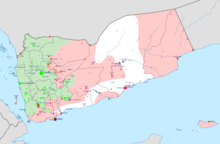
Current military situation in Yemen:
On 13 November 2014, unidentified militants in Yemen pledged allegiance to ISIL.[209] By December of that year, ISIL had built an active presence inside Yemen, with its recruitment drive bringing it into direct competition with al-Qaeda-affiliated al-Qaeda in the Arabian Peninsula (AQAP).[151][218] In February 2015, it was reported that some members of Ansar al-Sharia in Yemen had split from AQAP and pledged allegiance to ISIL[219] As the Yemeni Civil War escalated in March 2015, at least seven ISIL Wilayat, named after existing provincial boundaries in Yemen, claimed responsibility for attacks against the Houthis, including the Hadhramaut Province, the ShabwahProvince, and the Sana’a Province.[220][221]
Shi’aHouthis (Revolutionary Committee) are principal enemies of Yemen’s ISIL branch.[222][223] U.S. supports the Saudi-led military intervention in Yemen against the Houthis,[224] but many in U.S. SOCOM reportedly favor Houthis, as they have been an effective force in rolling back al-Qaeda and recently ISIL in Yemen, “something that hundreds of U.S. drone strikes and large numbers of advisers to Yemen’s military had failed to accomplish”.[225]The Guardian reported: “As another 50 civilians die in the forgotten war, only Isis and al-Qaida are gaining from a conflict tearing Yemen apart and leaving 20 million people in need of aid.”[226]
West African Province[edit]
On 7 March 2015, Boko Haram’s leader Abubakar Shekau pledged allegiance to the Islamic State of Iraq and the Levant via an audio message posted on the organisation’s Twitter account.[227][228] On 12 March 2015, ISIL’s spokesman Abu Mohammad al-Adnani released an audio tape in which he welcomed the pledge of allegiance, and described it as an expansion of the group’s caliphate into West Africa.[5] ISIL publications from late March 2015 began referring to members of Boko Haram as part of Wilayat Gharb Afriqiya (West Africa Province).[221]
North Caucasus Province[edit]
Some commanders of the Caucasus Emirate in Chechnya and Dagestan switched their allegiance to ISIL in late 2014 and early 2015.[229] On 23 June 2015, ISIL spokesman Abu Mohammad al-Adnani accepted the pledges of allegiance and announced a new Wilayat Qawqaz (North Caucasus Province) under the leadership of Rustam Asildarov.[7][185]
Other areas of operation[edit]
- Unidentified militants in Saudi Arabia pledged allegiance to ISIL – designated as a province of ISIL.[209]
- The Free Sunnis of Baalbek Brigade (Lebanon) pledged allegiance to ISIL.[39]
- Sons of the Call for Tawhid and Jihad (Jordan) pledged allegiance to ISIL.[230]
Leadership and governance[edit]
The group is headed and run by al-Baghdadi, with a cabinet of advisers. There are two deputy leaders, Abu Muslim al-Turkmani (KIA) for Iraq andAbu Ali al-Anbari for Syria, and 12 local governors in Iraq and Syria. A third man, Abu Ala al-Afri, is also believed to hold a prominent position within the group, having been rumored to be the deputy leader of ISIL. Unusually, all three are believed to be ethnic Turkmens. The former Iraqi strongman Saddam Hussein was also said to have had senior Turkmen within his inner circle.[231][232] While al-Bahdadi has told followers to “advise me when I err” in sermons, “any threat, opposition, or even contradiction is instantly eradicated”, according to observers.[233] Beneath the leaders are councils on finance, leadership, military matters, legal matters—including decisions on executions—foreign fighters’ assistance, security, intelligence and media. In addition, a Shura council has the task of ensuring that all decisions made by the governors and councils comply with the group’s interpretation of sharia.[234] The majority of ISIL’s leadership is dominated by Iraqis, especially former members of Saddam Hussein’s government.[235][236] It has been reported that Iraqis and Syrians have been given greater precedence over other nationalities within ISIL due to the fact that the group need the loyalties of the local Sunni populations in both Syria and Iraq in order to be sustainable.[237][238]Other reports have indicated however that Syrians are at a disadvantage to foreign members of ISIL, with some native Syrian fighters resenting alleged ‘favoritism’ towards foreigners over pay and accommodation.[239][240]
In September 2014, The Wall Street Journal estimated that eight million Iraqis and Syrians live in areas controlled by ISIL.[241]Ar-Raqqah in Syria is the de facto headquarters, and is said to be a test case of ISIL governance.[242]As of September 2014, governance in Ar-Raqqah has been under the total control of ISIL where it has rebuilt the structure of modern government in less than a year. Former government workers from the Assad government maintained their jobs after pledging allegiance to ISIL. Institutions, restored and restructured, provided their respective services. The Ar-Raqqah dam continues to provide electricity and water. Foreign expertise supplements Syrian officials in running civilian institutions. Only the police and soldiers are ISIL fighters, who receive confiscated lodging previously owned by non-Sunnis and others who fled. Welfare services are provided, price controls established, and taxes imposed on the wealthy. ISIL runs a soft power programme in the areas under its control in Iraq and Syria, which includes social services, religious lectures and da’wah—proselytising—to local populations. It also performs public services such as repairing roads and maintaining theelectricity supply.[243]
British security expert Frank Gardner concluded that ISIL’s prospects of maintaining control and rule were greater in 2014 than they had been in 2006, and that despite being as brutal as before, ISIL had become “well entrenched” among the population and was not likely to be dislodged by ineffective Syrian or Iraqi forces. It has replaced corrupt governance with functioning locally controlled authorities, services have been restored and there are adequate supplies of water and oil. With Western-backed intervention being unlikely, the group will “continue to hold their ground” and rule an area “the size of Pennsylvania for the foreseeable future”, he said.[184][244] Further solidifying ISIL rule is the control of wheat production, which is roughly 40% of Iraq’s production. ISIL has maintained food production, crucial to governance and popular support.[245]
Non-combatants[edit]
Although ISIL attracts followers from different parts of the world by promoting the image of holy war, not all of their recruits end up in combatant roles. There have been several cases of new recruits who expected to be mujihadeen that returned from Syria disappointed by the everyday jobs that had been assigned to them, like drawing water or cleaning toilets, or by the ban imposed on use of mobile phones during military training sessions.[246]
ISIL also publishes material directed to women. Although women are not allowed to take up arms, media groups encourage them to play supportive roles within ISIL: providing first aid, cooking, nursing and sewing, to become “good wives of jihad”.[247]
Designation as a terrorist organisation[edit]
The United Nations Security Council in its Resolution 1267 (1999) described Osama bin Laden and his al-Qaeda associates as operators of a network of terrorist training camps.[271] The UN’s Al-Qaida Sanctions Committee first listed ISIL in its Sanctions List under the name “Al-Qaida in Iraq” on 18 October 2004, as an entity/group associated with al-Qaeda. On 2 June 2014, the group was added to its listing under the name “Islamic State in Iraq and the Levant”. The European Union adopted the UN Sanctions List in 2002.[251]
Many world leaders and government spokespeople have called ISIL a terrorist group or banned it, without their countries having formally designated it as such. Some examples:
The Government of Germany banned ISIL in September 2014. Activities banned include donations to the group, recruiting fighters, holding ISIL meetings and distributing its propaganda, flying ISIL flags, wearing ISIL symbols and all ISIL activities. “The terror organisation Islamic State is a threat to public safety in Germany as well”, de Mazière said. “Today’s ban is directed solely against terrorists who abuse religion for their criminal goals.” The ban does not mean ISIL has been outlawed as a foreign terrorist organisation, as that requires a court judgement.[272]
In October 2014, Switzerland banned ISIL’s activities in the country, including propaganda and financial support of the fighters, with prison sentences as potential penalties.[273]
In mid-December 2014, India banned ISIL, after arresting the operator of a pro-ISIL Twitter account.[274] Pakistan designated ISIL as a banned organisation in late August 2015, under which all elements expressing sympathy for the group would be blacklisted and sanctioned.[270]
Media sources worldwide have also described ISIL as terrorist.[34][105][259][275][276][277]
Human rights abuse and war crime findings[edit]
In July 2014, the BBC reported the United Nations’ chief investigator as stating: “Fighters from the Islamic State in Iraq and the Levant (ISIL) may be added to a list of war crimes suspects in Syria.”[278] By June 2014, according to United Nations reports, ISIL had killed hundreds of prisoners of war[279] and over 1,000 civilians.[280][281][282] In August 2014, the UN accused ISIL of committing “mass atrocities” and war crimes,[283][284] including the mass killing of up to 250 Syrian Army soldiers near Tabqa Air base.[279] Other known killings of military prisoners took place in Camp Speicher, where 1,095–1,700 Iraqi soldiers were shot and “thousands” more went “missing”, and the Shaer gas field, where 200 Syrian soldiers were shot.[285]Navi Pillay, the UN High Commissioner for Human Rights, said that they were performing “widespread ethnic and religious cleansing in the areas under their control”.[286]
In early September 2014, the United Nations Human Rights Council agreed to send a team to Iraq and Syria to investigate the abuses and killings being carried out by ISIL on “an unimaginable scale”. Prince Zeid bin Ra’ad, the newly appointed UN High Commissioner for Human Rights, urged world leaders to step in to protect women and children suffering at the hands of ISIL militants, who he said were trying to create a “house of blood”. He appealed to the international community to concentrate its efforts on ending the conflict in Iraq and Syria.[287]
In November 2014, the UN Commission of Inquiry on Syria said that ISIL was committing crimes against humanity.[288][289] A report by Human Rights Watch in November 2014 accused ISIL groups in control of Derna, Libya of war crimes and human rights abuses and of terrorising residents. Human Rights Watch documented three apparent summary executions and at least ten public floggings by the Islamic Youth Shura Council, which joined ISIL in November. It also documented the beheading of three Derna residents and dozens of seemingly politically motivated assassinations of judges, public officials, members of the security forces and others. Sarah Leah Watson, Director of HRW Middle East and North Africa, said: “Commanders should understand that they may face domestic or international prosecution for the grave rights abuses their forces are committing.”[290]
Speaking of ISIL’s methods, the United Nations Commission on Human Rights has stated that the group “seeks to subjugate civilians under its control and dominate every aspect of their lives through terror, indoctrination, and the provision of services to those who obey”.[291]
Religious and minority group persecution[edit]
ISIL compels people in the areas that it controls to live according to its interpretation of sharia law.[275][292] There have been many reports of the group’s use of death threats, torture and mutilation to compel conversion to Islam,[275][292] and of clerics being killed for refusal to pledge allegiance to the so-called “Islamic State”.[293] ISIL directs violence against Shia Muslims, Alawites, Assyrian, Chaldean, Syriac andArmenianChristians, Yazidis, Druze, Shabaks and Mandeans in particular.[294]
ISIL fighters are targeting Syria’s minority Alawite sect.[295][296] Islamic State and affiliated jihadist groups reportedly took the lead in anoffensive on Alawite villages in Latakia Governorate of Syria in August 2013.[297][298]
Amnesty International has held ISIL responsible for the ethnic cleansing of ethnic and religious minority groups in northern Iraq on a “historic scale”. In a special report released on 2 September 2014, it describes how ISIL has “systematically targeted non-Arab and non-Sunni Muslim communities, killing or abducting hundreds, possibly thousands, and forcing more than 830,000 others to flee the areas it has captured since 10 June 2014”. Among these people are Assyrian Christians, Turkmen Shia, Shabak Shia, Yazidis, Kaka’i and Sabean Mandeans, who have lived together for centuries in Nineveh province, large parts of which came under ISIL’s control.[299][300]
Among the known killings of religious and minority group civilians carried out by ISIL are those in the villages and towns of Quiniyeh (70–90 Yazidis killed), Hardan (60 Yazidis killed), Sinjar (500–2,000 Yazidis killed), Ramadi Jabal (60–70 Yazidis killed), Dhola (50 Yazidis killed), Khana Sor (100 Yazidis killed), Hardan (250–300 Yazidis killed), al-Shimal (dozens of Yazidis killed), Khocho (400 Yazidis killed and 1,000 abducted), Jadala (14 Yadizis killed)[301] and Beshir (700 Shia Turkmen killed),[302] and others committed near Mosul (670 Shia inmates of the Badush prison killed),[302] and in Tal Afar prison, Iraq (200 Yazidis killed for refusing conversion).[301] The UN estimated that 5,000 Yazidis were killed by ISIL during the takeover of parts of northern Iraq in August 2014.[303] In late May 2014, 150 Kurdish boys from Kobani aged 14–16 were abducted and subjected to torture and abuse, according to Human Rights Watch.[304] In the Syrian towns of Ghraneij, Abu Haman and Kashkiyeh 700 members of the Sunni Al-Shaitat tribe were killed for attempting an uprising against ISIL control.[305][306] The UN reported that in June 2014 ISIL had killed a number of Sunni Islamic clerics who refused to pledge allegiance to it.[293]
Christians living in areas under ISIL control who want to remain in the “caliphate” face three options: converting to Islam, paying a religious levy—jizya—or death.[307][308] “We offer them three choices: Islam; the dhimma contract – involving payment of jizya; if they refuse this they will have nothing but the sword”, ISIL said.[309] ISIL had already set similar rules for Christians in Ar-Raqqah, once one of Syria’s more liberal cities.[310][311]
On 23 February 2015, in response to a major Kurdish offensive in the Al-Hasakah Governorate, ISIL abducted 150 Assyrian Christians from villages near Tal Tamr (Tell Tamer) in northeastern Syria, after launching a large offensive in the region.[312][313]
It was claimed that ISIL campaigns against Kurdish and Yezidi enclaves in Iraq and Syria were a part of organised Arabization plans. For instance, a Kurdish official in Iraqi Kurdistan claimed that the ISIL campaign in Sinjar was a case of Arabization campaign.[314]
Treatment of civilians[edit]
During the Iraqi conflict in 2014, ISIL released dozens of videos showing its ill treatment of civilians, many of whom had apparently been targeted on the basis of their religion or ethnicity. Navi Pillay, UN High Commissioner for Human Rights, warned of war crimes being committed in the Iraqi war zone, and disclosed a UN report of ISIL militants murdering Iraqi Army soldiers and 17 civilians in a single street in Mosul. The UN reported that in the 17 days from 5 to 22 June, ISIL killed more than 1,000 Iraqi civilians and injured more than 1,000.[280][281][282] After ISIL released photographs of its fighters shooting scores of young men, the UN declared that cold-blooded “executions” by militants in northern Iraq almost certainly amounted to war crimes.[315]
ISIL’s advance in Iraq in mid-2014 was accompanied by continuing violence in Syria. On 29 May, ISIL raided a village in Syria and at least 15 civilians were killed, including, according to Human Rights Watch, at least six children.[316] A hospital in the area confirmed that it had received 15 bodies on the same day.[317] The Syrian Observatory for Human Rights reported that on 1 June, a 102-year-old man was killed along with his whole family in a village in Hama province.[318] According to Reuters, 1,878 people were killed in Syria by ISIL during the last six months of 2014, most of them civilians.[319]
In Mosul, ISIL has implemented a sharia school curriculum which bans the teaching of art, music, national history, literature and Christianity. Although Charles Darwin’s theory of evolution has never been taught in Iraqi schools, the subject has been banned from the school curriculum. Patriotic songs have been declared blasphemous, and orders have been given to remove certain pictures from school textbooks.[320][321][322][323] Iraqi parents have largely boycotted schools in which the new curriculum has been introduced.[324]
After capturing cities in Iraq, ISIL issued guidelines on how to wear clothes and veils. ISIL warned women in the city of Mosul to wear full-face veils or face severe punishment.[325]A cleric told Reuters in Mosul that ISIL gunmen had ordered him to read out the warning in his mosque when worshippers gathered. ISIL ordered the faces of both male and female mannequins to be covered, in an order which also banned the use of naked mannequins.[326] In Ar-Raqqah the group uses its two battalions of female fighters in the city to enforce compliance by women with its strict laws on individual conduct.[327]
ISIL released 16 notes labelled “Contract of the City”, a set of rules aimed at civilians in Nineveh. One rule stipulated that women should stay at home and not go outside unless necessary. Another rule said that stealing would be punished by amputation.[243][328] In addition to the Muslim custom of banning the sale and use of alcohol, ISIL has banned the sale and use of cigarettes and hookah pipes. It has also banned “music and songs in cars, at parties, in shops and in public, as well as photographs of people in shop windows”.[329]
According to The Economist, Saudi practices also followed by the group include the establishment of religious police to root out “vice” and enforce attendance at salat prayers, the widespread use of capital punishment, and the destruction of Christian churches and non-Sunni mosques or their conversion to other uses.[179]
ISIL carried out executions on both men and women who were accused of various acts and found guilty of crimes against Islam such as homosexuality, adultery, watching pornography, usage and possession of contraband, rape, blasphemy, witchcraft,[330]renouncing Islam and murder. Before the accused are executed their charges are read toward them and the spectators. Executions take various forms, including stoning to death, crucifixions, beheadings, burning people alive, and throwing people from tall buildings.[331][332][333][334]
Child soldiers[edit]
According to a report by the magazine Foreign Policy, children as young as six are recruited or kidnapped and sent to military and religious training camps, where they practise beheading with dolls and are indoctrinated with the religious views of ISIL. Children are used as human shields on front lines and to provide blood transfusions for Islamic State soldiers, according to Shelly Whitman of the Roméo Dallaire Child Soldiers Initiative. The second installment of a Vice News documentary about ISIL focused on how the group is specifically grooming children for the future. A spokesman told VICE News that those under the age of 15 go to sharia camp to learn about religion, while those older than 16 can go to military training camp. Children are also used for propaganda. According to a UN report, “In mid-August, ISIL entered a cancer hospital in Mosul, forced at least two sick children to hold the ISIL flag and posted the pictures on the internet.” Misty Buswell, a Save the Children representative working with refugees in Jordan, said, “It’s not an exaggeration to say we could lose a whole generation of children to trauma.”[335]
Sexual violence and slavery[edit]
Sexual violence perpetrated by ISIL includes: using rape as a weapon of war;[336] instituting forced marriages to its fighters;[337] and trading women and girls as sex slaves.[338]
There are many reports of sexual abuse and enslavement in ISIL-controlled areas of women and girls, predominantly from the minority Christian and Yazidi communities.[339][340]Fighters are told that they are free to have sex with or rape non-Muslim captive women.[341] Haleh Esfandiari from the Woodrow Wilson International Center for Scholars has highlighted the abuse of local women by ISIL militants after they have captured an area. “They usually take the older women to a makeshift slave market and try to sell them. The younger girls … are raped or married off to fighters”, she said, adding, “It’s based on temporary marriages, and once these fighters have had sex with these young girls, they just pass them on to other fighters.”[342]
The capture of Iraqi cities by the group in June 2014 was accompanied by an upsurge in crimes against women, including kidnap and rape.[343][344][345] According to Martin Williams in The Citizen, some hard-line Salafists apparently regard extramarital sex with multiple partners as a legitimate form of holy war and it is “difficult to reconcile this with a religion where some adherents insist that women must be covered from head to toe, with only a narrow slit for the eyes”.[346]
As of August 2015, the trade in sex slaves appeared to remain restricted to Yazidi women and girls.[338] It has reportedly become a recruiting technique to attract men from conservative Muslim societies, where dating and casual sex are not allowed.[338]Nazand Begikhani said of the Yazidi victims, “These women have been treated like cattle … They have been subjected to physical and sexual violence, including systematic rape and sex slavery. They’ve been exposed in markets in Mosul and in Raqqa, Syria, carrying price tags.”[347]
A United Nations report issued on 2 October 2014, based on 500 interviews with witnesses, said that ISIL took 450–500 women and girls to Iraq’s Nineveh region in August, where “150 unmarried girls and women, predominantly from the Yazidi and Christian communities, were reportedly transported to Syria, either to be given to ISIL fighters as a reward or to be sold as sex slaves”.[340] In mid-October, the UN confirmed that 5,000–7,000 Yazidi women and children had been abducted by ISIL and sold into slavery.[348][349]In November 2014 The New York Times reported on the accounts given by five who escaped ISIL of their captivity and abuse.[350] In December 2014, the Iraqi Ministry of Human Rights announced that ISIL had killed over 150 women and girls in Fallujah who refused to participate in sexual jihad.[351][352] Non-Muslim women have reportedly been married off to fighters against their will. ISIL claims the women provide the new converts and children necessary to spread ISIL’s control.[353]
Shortly after the death of US hostage Kayla Mueller was confirmed on 10 February 2015,[354] several media outlets reported that the US intelligence community believed she may have been given as a wife to an ISIL fighter.[355][356][357] In August 2015 it was confirmed that she had been forced into marriage[358] to Abu Bakr al-Baghdadi, who raped her repeatedly.[359][360][361][362][363][364][364][365] The Mueller family was informed by the U.S. Federal Bureau of Investigation (FBI) that Abu Bakr al-Baghdadi had sexually abused Ms. Mueller, and that Ms. Mueller had also been tortured.[364]Abu Sayyaf‘s widow, Umm Sayyaf, confirmed that it was her husband who had been Mueller’s primary abuser.[366]
In its digital magazine Dabiq, ISIL explicitly claimed religious justification for enslaving Yazidi women.[367][368][369] According to The Wall Street Journal, ISIL appeals to apocalyptic beliefs and claims “justification by a Hadith that they interpret as portraying the revival of slavery as a precursor to the end of the world”.[370] ISIL appeals to the Hadith and Qur’anwhen claiming the right to enslave and rape captive non-Muslim women.[367][371][372] According to Dabiq, “enslaving the families of the kuffar and taking their women as concubines is a firmly established aspect of the Sharia’s that if one were to deny or mock, he would be denying or mocking the verses of the Qur’an and the narration of the Prophet … and thereby apostatizing from Islam.” Captured Yazidi women and children are divided among the fighters who captured them, with one fifth taken as a tax.[372][373]ISIL has received widespread criticism from Muslim scholars and others in the Muslim world for using part of the Qur’an to derive a ruling in isolation, rather than considering the entire Qur’an and Hadith.[367][371][372] According to Mona Siddiqui, ISIL’s “narrative may well be wrapped up in the familiar language of jihad and ‘fighting in the cause of Allah’, but it amounts to little more than destruction of anything and anyone who doesn’t agree with them”; she describes ISIL as reflecting a “lethal mix of violence and sexual power” and a “deeply flawed view of manhood”.[353]Dabiq describes “this large-scale enslavement” of non-Muslims as “probably the first since the abandonment of Shariah law”.[372][373]
In late 2014, ISIL released a pamphlet that focused on the treatment of female slaves.[374][375] It claims that the Quran allows fighters to have sex with captives, including adolescent girls, and to beat slaves as discipline. The pamphlet’s guidelines also allow fighters to trade slaves, including for sex, as long as they have not been impregnated by their owner.[374][375][376] Charlie Winter, a researcher at the counter-extremist think tankQuilliam, described the pamphlet as “abhorrent”.[376][377] In response to this document Abbas Barzegar, a religion professor at Georgia State University, said Muslims around the world find ISIL’s “alien interpretation of Islam grotesque and abhorrent”.[378] Muslim leaders and scholars from around the world have rejected the validity of ISIL’s claims, claiming that the reintroduction of slavery is un-Islamic, that they are required to protect “People of the Scripture” including Christians, Jews, Muslims and Yazidis, and that ISIL’s fatwas are invalid due to their lack of religious authority and the fatwas’ inconsistency with Islam.[379][380]
The Independent reported in 2015 that the usage of Yazidi sex slaves had created ongoing friction among fighters within ISIL. Sajad Jiyad, a Research Fellow and Associate Member at the Iraqi Institute for Economic Reform, told the newspaper that many ISIL supporters and fighters had been in denial about the trafficking of kidnapped Yazidi women until a Dabiq article justifying the practice was published.[381][382]The New York Times said in August 2015 that “[t]he systematic rape of women and girls from the Yazidi religious minority has become deeply enmeshed in the organization and the radical theology of the Islamic State in the year since the group announced it was reviving slavery as an institution.”[338] The article claims that ISIL is not merely exonerating but sacralising rape, and illustrated this with the testimony of escapees. One 15-year-old victim said that, while she was being assaulted, her rapist “kept telling me this is ibadah“; a 12-year-old victim related how her assailant claimed that, “by raping me, he is drawing closer to God”;[338] and one adult prisoner told how, when she challenged her captor about repeatedly raping a 12 year old, she was met with the retort, “No, she’s not a little girl, she’s a slave and she knows exactly how to have sex and having sex with her pleases God.”[338]
Attacks on members of the press[edit]
The Committee to Protect Journalists states: “Without a free press, few other human rights are attainable.”[383] ISIL has tortured and murdered local journalists,[384][385] creating what Reporters Without Borders calls “news blackholes” in areas controlled by ISIL. ISIL fighters have reportedly been given written directions to kill or capture journalists.[386]
In December 2013, two suicide bombers stormed the headquarters of TV station Salaheddin and killed five journalists, after accusing the station of “distorting the image of Iraq’s Sunni community”. Reporters Without Borders reported that on 7 September 2014, ISIL seized and on 11 October publicly beheaded Raad al-Azzawi, a TV Salaheddin cameraman from the village of Samra, east of Tikrit.[387] As of October 2014, according to the Journalistic Freedoms Observatory, ISIL is holding nine journalists and has nine others under close observation in Mosul and Salahuddin province.[386]
During 2013 and part of 2014, an ISIL unit nicknamed the Beatles acquired and held 12 Western journalists hostage, along with aid workers and other foreign hostages, totalling 23 or 24 known hostages. A Polish journalist Marcin Suder was captured in July 2013 but escaped four months later.[388] The unit executed American journalists James Foley and Steven Sotloff and released beheading videos. Eight of the other journalists were released for ransom: Danish journalist Daniel Rye Ottosen, French journalists Didier François, Edouard Elias, Nicolas Hénin, and Pierre Torres, and Spanish journalists Marc Marginedas, Javier Espinosa, and Ricardo García Vilanova. The unit continues to hold hostage British journalist John Cantlie and a female aid worker.[389]
Cyber-security group the Citizen Lab released a report finding a possible link between ISIL and a digital attack on the Syrian citizen media group Raqqa Is Being Slaughtered Silently (RSS). Supporters of the media group received an emailed link to an image of supposed airstrikes, but clicking on the link introduced malware to the user’s computer that sends details of the user’s IP address and system each time it restarts. That information has been enough to allow ISIL to locate RSS supporters. “The group has been targeted for kidnappings, house raids, and at least one alleged targeted killing. At the time of that writing, ISIL was allegedly holding several citizen journalists in Raqqa”, according to the Citizen Lab report.[390]
On 8 January 2015, ISIL members in Libya claimed to have executed Tunisian journalists Sofiene Chourabi and Nadhir Ktari who disappeared in September 2014.[391] Also in January 2015, Japanese journalist Kenji Goto Jogo was kidnapped and beheaded, after a demand for a $200 million ransom payment was not met.[392]
Beheadings and mass executions[edit]
An unknown number of Syrians and Iraqis, several Lebanese soldiers, at least ten Kurds, two American journalists, one American and two British aid workers, and three Libyans have been beheaded by the Islamic State of Iraq and the Levant.[citation needed] ISIL uses beheadings to intimidate local populations and has released a series of propaganda videos aimed at Western countries.[393] They also engage in public and mass executions of Syrian and Iraqi soldiers and civilians,[296] sometimes forcing prisoners to dig their own graves before shooting lines of prisoners and pushing them in.[394][395] ISIL was reported to have beheaded about 100 foreign fighters as deserters who tried to leaveRaqqa.[396]
Use of chemical weapons[edit]
Kurds in northern Iraq reported being attacked by ISIS with chemical weapons in August.[397]
Destruction of cultural and religious heritage[edit]
UNESCO‘s Director-General Irina Bokova has warned that ISIL is destroying Iraq’s cultural heritage, in what she has called “cultural cleansing“. “We don’t have time to lose because extremists are trying to erase the identity, because they know that if there is no identity, there is no memory, there is no history”, she said. Referring to the ancient cultures of Christians, Yazidis and other minorities, she said, “This is a way to destroy identity. You deprive them of their culture, you deprive them of their history, their heritage, and that is why it goes hand in hand with genocide. Along with the physical persecution they want to eliminate – to delete – the memory of these different cultures. … we think this is appalling, and this is not acceptable.”[398]Saad Eskander, head of Iraq’s National Archives said, “For the first time you have cultural cleansing… For the Yazidis, religion is oral, nothing is written. By destroying their places of worship … you are killing cultural memory. It is the same with the Christians – it really is a threat beyond belief.”[399]

In July 2014, ISIL demolished the mosque dedicated to
Jonah in Mosul
To finance its activities, ISIL is stealing artifacts from Syria[400] and Iraq and sending them to Europe to be sold. It is estimated that ISIL raises US$200 million a year from cultural looting. UNESCO has asked for United Nations Security Council controls on the sale of antiquities, similar to those imposed after the 2003 Iraq War. UNESCO is working with Interpol, national customs authorities, museums, and major auction houses in attempts to prevent looted items from being sold.[399] ISIL occupied Mosul Museum, the second most important museum in Iraq, as it was about to reopen after years of rebuilding following the Iraq War, saying that the statues were against Islam and threatening to destroy the museum’s contents.[401][402]
ISIL considers worshipping at graves tantamount to idolatry, and seeks to purify the community of unbelievers. It has used bulldozers to crush buildings and archaeological sites.[402]Bernard Haykel has described al-Baghdadi’s creed as “a kind of untamed Wahhabism”, saying, “For Al Qaeda, violence is a means to an ends; for ISIS, it is an end in itself”.[178] The destruction by ISIL in July 2014 of the tomb and shrine of the prophet Yunus—Jonah in Christianity—the 13th-century mosque of Imam Yahya Abu al-Qassimin, the 14th-century shrine of prophet Jerjis—St George to Christians—and the attempted destruction of the Hadba minaret at the 12th-century Great Mosque of Al-Nuri have been described as “an unchecked outburst of extreme Wahhabism”.[403] “There were explosions that destroyed buildings dating back to the Assyrian era“, said National Museum of Iraq director Qais Rashid, referring to the destruction of the shrine of Yunus. He cited another case where “Daesh (ISIL) gathered over 1,500 manuscripts from convents and other holy places and burnt all of them in the middle of the city square”.[404] In March 2015, ISIL reportedly bulldozed the 13th-century BC Assyrian city of Nimrud, believing its sculptures to be idolatrous. UNESCO head, Irina Bokova, deemed this to be a war crime.[405]
Criticism[edit]
Islamic criticism[edit]
ISIL has received severe criticism from other Muslims, especially religious scholars and theologians. In late August 2014, the Grand Mufti of Saudi Arabia, Abdul-Aziz ibn Abdullah Al ash-Sheikh, condemned the Islamic State and al-Qaeda saying, “Extremist and militant ideas and terrorism which spread decay on Earth, destroying human civilisation, are not in any way part of Islam, but are enemy number one of Islam, and Muslims are their first victims”.[406] In late September 2014, 126 Sunni imams and Islamic scholars—primarilySufi[407]—from around the Muslim world signed an open letter to the Islamic State’s leader al-Baghdadi, explicitly rejecting and refuting his group’s interpretations of Islamic scriptures, the Qur’an and hadith, used by it to justify its actions.[408][409] “[You] have misinterpreted Islam into a religion of harshness, brutality, torture and murder … this is a great wrong and an offence to Islam, to Muslims and to the entire world”, the letter states.[410] It rebukes the Islamic State for its killing of prisoners, describing the killings as “heinous war crimes” and its persecution of the Yazidis of Iraq as “abominable”. Referring to the “self-described ‘Islamic State'”, the letter censures the group for carrying out killings and acts of brutality under the guise of jihad—holy struggle—saying that its “sacrifice” without legitimate cause, goals and intention “is not jihad at all, but rather, warmongering and criminality”.[410][411] It also accuses the group of instigating fitna—sedition—by instituting slavery under its rule in contravention of the anti-slavery consensus of the Islamic scholarly community.[410] Other scholars have described the group as not Sunnis, but Khawarij.[412]
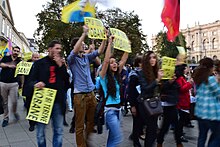
Kurdish demonstration against ISIL in
Vienna, Austria, 10 October 2014
According to The New York Times, “All of the most influential jihadist theorists are criticizing the Islamic State as deviant, calling its self-proclaimed caliphate null and void” and have denounced it for its beheading of journalists and aid workers.[178] ISIL is widely denounced by a broad range of Islamic clerics, including al-Qaeda-oriented and Saudi clerics.[11][178]
Sunni critics, including Salafi and jihadist muftis such as Adnan al-Aroor and Abu Basir al-Tartusi, say that ISIL and related terrorist groups are not Sunnis, but modern-day Khawarij—Muslims who have stepped outside the mainstream of Islam—serving an imperial anti-Islamic agenda.[413][414] Other critics of ISIL’s brand of Sunni Islam include Salafists who previously publicly supported jihadist groups such as al-Qaeda, for example the Saudi government official Saleh Al-Fawzan, known for his extremist views, who claims that ISIL is a creation of “Zionists, Crusaders and Safavids”, and the Jordanian-Palestinian writer Abu Muhammad al-Maqdisi, the former spiritual mentor to Abu Musab al-Zarqawi, who was released from prison in Jordan in June 2014 and accused ISIL of driving a wedge between Muslims.[414]
The group’s declaration of a caliphate has been criticised and its legitimacy disputed by Middle Eastern governments, other jihadist groups,[415] and Sunni Muslim theologians and historians. Qatar-based TV broadcaster and theologian Yusuf al-Qaradawi stated: “[The] declaration issued by the Islamic State is void under sharia and has dangerous consequences for the Sunnis in Iraq and for the revolt in Syria”, adding that the title of caliph can “only be given by the entire Muslim nation”, not by a single group.[416] The group’s execution of Muslims for breach of traditional sharia law while violating it itself (encouraging women to emigrate to its territory, traveling without a Wali—male guardian—and in violation of his wishes) has been criticized;[417] as has its love of archaic imagery (horsemen and swords) while engaging inbid‘ah (religious innovation) in establishing female religious police (known as al-Khansa’ Brigades).[418]
Two days after the beheading of Hervé Gourdel,hundreds of Muslims gathered in the Grand Mosque of Paris to show solidarity against the beheading. The protest was led by the leader of the French Council of the Muslim Faith, Dalil Boubakeur, and was joined by thousands of other Muslims around the country under the slogan “Not in my name”.[419][420]French president François Hollande said Gourdel’s beheading was “cowardly” and “cruel”, and confirmed that airstrikes would continue against ISIL in Iraq. Hollande also called for three days of national mourning, with flags flown at half-mast throughout the country and said that security would be increased throughout Paris.[419]
An Islamic Front Sharia Court Judge in Aleppo Mohamed Najeeb Bannan stated “The legal reference is the Islamic Sharia. The cases are different, from robberies to drug use, to moral crimes. It’s our duty to look at any crime that comes to us. . . After the regime has fallen, we believe that the Muslim majority in Syria will ask for an Islamic state. Of course, it’s very important to point out that some say the Islamic Sharia will cut off people’s hands and heads, but it only applies to criminals. And to start off by killing, crucifying etc. That is not correct at all.” In response to being asked what the difference between the Islamic Front’s and ISIS’s version of sharia would be, he said “One of their mistakes is before the regime has fallen, and before they’ve established what in Sharia is called Tamkeen [having a stable state], they started applying Sharia, thinking God gave them permission to control the land and establish a Caliphate. This goes against the beliefs of religious scholars around the world. This is what [IS] did wrong. This is going to cause alot of trouble. Anyone who opposes [IS] will be considered against Sharia and will be severely punished.”[421]
The Islamic Front criticized ISIL, saying: “They killed the people of Islam and leave the idol worshippers” (يقتلون أهل الإسلام ويدعون أهل الأوثان) and “They use the verses talking about the disbelievers and implement it on the Muslims” (ينزلون أيات نزلت في الكفار على المسلمين).[422]
International criticism[edit]
The group has attracted widespread criticism internationally for its extremism, from governments and international bodies such as the United Nations and Amnesty International. On 24 September 2014, United Nations Secretary-GeneralBan Ki-Moon stated: “As Muslim leaders around the world have said, groups like ISIL – or Da’ish – have nothing to do with Islam, and they certainly do not represent a state. They should more fittingly be called the ‘Un-Islamic Non-State’.”[423] The group was described as a cult in a Huffington Postcolumn by notable cult authority Steven Hassan.[424]
Criticism of the name “Islamic State” and “caliphate” declaration[edit]
The group’s declaration of a new caliphate in June 2014 and adoption of the name “Islamic State” have been criticised and ridiculed by Muslim scholars and rival Islamists both inside and outside the territory it controls.[68][69][70][425] In a speech in September 2014, President Obama said that ISIL is not “Islamic” on the basis that no religion condones the killing of innocents and that no government recognises the group as a state,[74] while many object to using the name “Islamic State” owing to the far-reaching religious and political claims to authority which that name implies. The United Nations Security Council, the United States, Canada, Turkey, Australia, Russia, the United Kingdom[71][72][73][426][427][428][429] and other countries generally call the group “ISIL”, while much of the Arab world uses the Arabic acronym “Dāʻish”. France’s Foreign Minister Laurent Fabius said “This is a terrorist group and not a state. I do not recommend using the term Islamic State because it blurs the lines between Islam, Muslims, and Islamists. The Arabs call it ‘Daesh’ and I will be calling them the ‘Daesh cutthroats.'”[430] Retired general John Allen, the U.S. envoy appointed to co-ordinate the coalition, U.S. military Lieutenant General James Terry, head of operations against the group, and Secretary of State John Kerry had all shifted toward use of the term DAESH by December 2014.[431]

Battle of Kobani
In late August 2014, a leading Islamic educational institution, Dar al-Ifta al-Misriyyah in Egypt, advised Muslims to stop calling the group “Islamic State” and instead refer to it as “Al-Qaeda Separatists in Iraq and Syria” or “QSIS”, because of the militant group’s “un-Islamic character”.[432][433] When addressing the United Nations Security Council in September 2014, Australian Prime Minister Tony Abbottsummarised the widespread objections to the name “Islamic State” thus: “To use this term [Islamic State] is to dignify a death cult; a death cult that, in declaring itself a caliphate, has declared war on the world”.[434] The group is very sensitive about its name. “They will cut your tongue out even if you call them ISIS – you have to say ‘Islamic State'”, said a woman in ISIL-controlled Mosul.[435]
In mid-October 2014, representatives of the Islamic Society of Britain, the Association of British Muslims and the UK’s Association of Muslim Lawyers proposed that “‘Un-Islamic State’ (UIS) could be an accurate and fair alternative name to describe this group and its agenda”, further stating, “We need to work together and make sure that these fanatics don’t get the propaganda that they feed off.”[436][437] The “Islamic State” is mocked on social media websites such as Twitter and YouTube, with the use of hashtags, mock recruiting ads, fake news articles and YouTube videos.[438] One parody, by a Palestinian TV satire show, portrays ISIL as “buffoon-like hypocrites”, and has had more than half a million views on YouTube.[438][439]
Views of ISIL as un-Islamic[edit]
Mehdi Hasan, a political journalist in the UK, said in the New Statesman, “Whether Sunni or Shia, Salafi or Sufi, conservative or liberal, Muslims – and Muslim leaders – have almost unanimously condemned and denounced ISIL not merely as un-Islamic but actively anti-Islamic.”[440]
Views of ISIL as Islamic[edit]
Hassan Hassan, an analyst at the Delma Institute, wrote in The Guardian that because the Islamic State “bases its teachings on religious texts that mainstream Muslim clerics do not want to deal with head on, new recruits leave the camp feeling that they have stumbled on the true message of Islam”.[441]
In mid-February 2015, Graeme Wood, a lecturer in political science at Yale University, said in The Atlantic, “The religion preached by its most ardent followers derives from coherent and even learned interpretations of Islam.”[442]
In the media[edit]
By 2014, ISIL was increasingly being viewed as a militia rather than a terrorist group.[443] As major Iraqi cities fell to ISIL in June 2014, Jessica Lewis, a former U.S. Army intelligence officer at the Institute for the Study of War, described ISIL as “not a terrorism problem anymore”, but rather “an army on the move in Iraq and Syria, and they are taking terrain. They have shadow governments in and around Baghdad, and they have an aspirational goal to govern. I don’t know whether they want to control Baghdad, or if they want to destroy the functions of the Iraqi state, but either way the outcome will be disastrous for Iraq.” Lewis has called ISIL “an advanced military leadership”. She said, “They have incredible command and control and they have a sophisticated reporting mechanism from the field that can relay tactics and directives up and down the line. They are well-financed, and they have big sources of manpower, not just the foreign fighters, but also prisoner escapees.”[443]
While officials[which?] fear that ISIL may inspire attacks in the United States from sympathisers or those returning after joining ISIL, U.S. intelligence agencies have found no specific plots or any immediate threat. Former U.S. Defense Secretary Chuck Hagel saw an “imminent threat to every interest we have”, but former top counter-terrorism adviserDaniel Benjamin has derided such alarmist talk as a “farce” that panics the public.[444]
Former British Foreign Secretary David Miliband concluded that the 2003 invasion of Iraq caused the creation of ISIL.[445]
Some news commentators, such as international newspaper columnist Gwynne Dyer,[446] and samples of American public opinion, such as surveys by NPR,[447] have advocated a strong but measured response to ISIL’s recent provocative acts. Writing for The Guardian, Pankaj Mishra rejects that the group is a resurgence of medieval Islam and rather expresses that, “In actuality, Isis is the canniest of all traders in the flourishing international economy of disaffection: the most resourceful among all those who offer the security of collective identity to isolated and fearful individuals. It promises, along with others who retail racial, national and religious supremacy, to release the anxiety and frustrations of the private life into the violence of the global.”[448]
Allegations of Turkish support[edit]
Turkey has long been accused by experts, Syrian Kurds, and even U.S. Vice-President Joe Biden of supporting or colluding with ISIL.[449][450][451] According to journalist Patrick Cockburn, there is “strong evidence for a degree of collaboration” between the Turkish intelligence services and ISIL, although the “exact nature of the relationship … remains cloudy”.[452] David L. Phillips of Columbia University‘s Institute for the Study of Human Rights, who compiled a list of allegations and claims accusing Turkey of assisting ISIL, writes that these allegations “range from military cooperation and weapons transfers to logistical support, financial assistance, and the provision of medical services”.[453] Several ISIL fighters and commanders have claimed that Turkey supports ISIL.[454][455][456] Within Turkey itself, ISIL is believed to have caused increasing political polarisation between secularists and Islamists.[457]
In July 2015, a raid by US special forces on a compound housing the Islamic State’s “chief financial officer”, Abu Sayyaf, produced evidence that Turkish officials directly dealt with ranking ISIS members. According to a senior Western official, documents and flash drives seized during the Sayyaf raid revealed links “so clear” and “undeniable” between Turkey and ISIS “that they could end up having profound policy implications for the relationship between us and Ankara”.[449]
Turkey has been further criticised for allowing individuals from outside the region to enter its territory and join ISIL in Syria.[458][459] With many Islamist fighters passing through Turkey to fight in Syria, Turkey has been accused of becoming a transit country for such fighters and has been labelled the “Gateway to Jihad”.[460] Turkish border patrol officers are reported to have deliberately overlooked those entering Syria, upon payment of a small bribe.[460] A report by Sky News exposed documents showing that passports of foreign Islamists wanting to join ISIL by crossing into Syria had been stamped by the Turkish government.[461] An ISIL commander stated that “most of the fighters who joined us in the beginning of the war came via Turkey, and so did our equipment and supplies”,[456][462] adding that ISIL fighters received treatment in Turkish hospitals.[456]
Allegations of Qatari support[edit]
The State of Qatar has long been accused of acting as a conduit for the flow of funds to the Islamic State of Iraq and the Levant. While there is no proof that the Qatari government is behind the movement of funds from the gas-rich nation to ISIL, it has been criticized for not doing enough to stem the flow of financing. Private donors within Qatar, sympathetic to the aims of radical groups such as al-Nusra Front and ISIL, are believed to be channeling their resources to support these organisations.[463][464] According to the U.S. Treasury Department, a number of terrorist financiers have been operating in Qatar. Qatari citizen Abd al Rahman al Nuaymi has served as an interlocutor between Qatari donors and leaders of al-Qaeda in Iraq (AQI). Nuaymi reportedly oversaw the transfer of US$2 million per month to AQI over a period of time. Nuaymi is also one of several of Qatar-based al-Qaeda financiers sanctioned by the U.S.Treasury in recent years. According to some reports, U.S. officials believe that the largest portion of private donations supporting ISIS and al-Qaeda-linked groups now comes from Qatar rather than Saudi Arabia.[465]
In August 2014, a German minister Gerd Müller accused Qatar of having links to ISIL, stating “You have to ask who is arming, who is financing ISIS troops. The keyword there is Qatar”. Qatari foreign minister Khalid bin Mohammad Al Attiyah reiterated this stance when he stated: “Qatar does not support extremist groups, including [ISIL], in any way. We are repelled by their views, their violent methods and their ambitions.”[466][467][468][469]
Allegations of Saudi Arabian support[edit]
Although Saudi Arabia’s government rejected the claims,[470] Former Iraqi Prime Minister Nouri al-Maliki accused Saudi Arabia of funding ISIL.[471] Some media outlets, such asNBC, the BBC and The New York Times, and the U.S.-based think tank Washington Institute for Near East Policy have written about individual Saudi donations to the group and the Saudi state’s decade-long sponsorship of Wahhabism around the world, but have concluded that there is no evidence of direct Saudi state support for ISIL.[472][473]
Allegations of Syrian support[edit]
ISIL attacks in Syria: 1 Jan – 21 November 2014 [474]
Attacks against Syrian government forces (13%)
Attacks against other groups (
FSA, etc.) (64%)
Other (23%)
During the ongoing Syrian Civil War, many opposition and anti-Assad parties in the conflict have accused the Syrian leadership of Bashar Assad of some form of collusion with ISIL,[475][476] whose dominance in the opposition against the Bashar al-Assad government would give that government a basis for its claim to being under attack by “terrorists” and “a secular bulwark against al-Qaida and jihadi fanaticism”.[477]Several sources have claimed that ISIL prisoners were strategically released from Syrian prisons at the beginning of the Syrian Civil War in 2011.[478] The Syrian government has bought oil directly from ISIL,[479] and in March 2015 a European Union report brought to light that the Syrian government and ISIL jointly run a HESCO gas plant in Tabqa, central Syria; the facility continues to supply government-held areas, and electricity continues to be supplied to ISIL-held areas from government-run power plants.[480] United States Secretary of State John Kerryhas stated that the Syrian government has tactically avoided ISIL forces in order to weaken moderate opposition such as the Free Syrian Army (FSA),[481] as well as “even purposely ceding some territory to them [ISIL] in order to make them more of a problem so he can make the argument that he is somehow the protector against them”.[482] An IHS Jane’s Terrorism and Insurgency Center database analysis confirmed that only 6% of Syrian government forces attacks were targeted at ISIL from 1 Jan to 21 November 2014, while in the same period only 13% of all ISIL attacks targeted government forces.[474] The National Coalition for Syrian Revolutionary and Opposition Forces has stated that the Syrian government has operatives inside ISIL,[483] as has the leadership of Ahrar ash-Sham.[484] ISIL members captured by the FSA have claimed that they were directed to commit attacks by Syrian government operatives.[485]
On 1 June 2015, the United States stated that the Syrian government was “making air-strikes in support” of an ISIL advance on Syrian opposition positions north of Aleppo.[486] The president of the Syrian National Coalition Khaled Koja accused Assad of acting “as an air force for [ISIL]”,[487] with the Defense Minister of the SNC Salim Idris stating that approximately 180 Syrian government officers were serving in ISIL and coordinating the group’s attacks with the Syrian Arab Army.[488]
A report on June 25, 2015 said that ISIS kept gas flowing to Assad regime-controlled power stations. Furthermore, ISIS allowed grain to pass from the Kurdish-held north-east to regime controlled areas at the cost of a 25% levy.[489]
On 28 June 2015, a source close to the Turkish National Intelligence Organization claimed an agreement was made between the Assad regime and ISIL to destroy the FSA in the country’s north, continue oil sales, assassinate Zahran Alloush and surrender Tadmur and Sukhna. The sources said that a group of commanders of both sides held a meeting at a gas production plant in Hasaka‘s al-Shaddadi area on 28 May 2015, not to stop fighting each other, but to focus on destroying a common enemy – the Syrian rebel forces, especially the FSA.[490] Turkish Prime Minister Ahmet Davutoğlu has blamed the rise of ISIL on the international communities inaction in regards to the Assad regime, which left a vacuum of power in which ISIL was able to grow.[491]
ISIL has repeatedly massacred Alawite civilians and executed captured Syrian Alawite soldiers,[295][297][492] with most Alawites supporting President Bashar al-Assad, himself an Alawite.[296]
Conspiracy theories[edit]
Conspiracy theorists in the Arab world have advanced rumours that the U.S. is secretly behind the existence and emboldening of ISIL, as part of an attempt to further destabilise the Middle East. After such rumours became widespread, the U.S. embassy in Lebanon issued an official statement denying the allegations, calling them a complete fabrication.[493] Others[who?] are convinced that ISIL leader al-Baghdadi is an Israeli Mossad agent and actor called Simon Elliot. The rumours claim that NSA documents leaked by Edward Snowden reveal this connection. Snowden’s lawyer has called the story “a hoax.”[494]
According to The New York Times, many in the Middle East believe that an alliance of the United States, Israel, and Saudi Arabia is directly responsible for the creation of ISIL. Egyptian, Tunisian, Palestinian, Jordanian and Lebanese news organizations have reported on the conspiracy theory.[495][496]
Countries and groups at war with ISIL[edit]
ISIL’s expanding claims to territory have brought it into armed conflict with many governments, militias and other armed groups. International rejection of ISIL as a terrorist entity and rejection of its claim to even exist have placed it in conflict with countries around the world.[citation needed]
Opposition within Syria, Iraq, Lebanon and other nations[edit]
American-led Coalition to counter the Islamic State of Iraq and the Levant[edit]
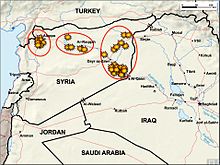
Airstrikes in Syria by 24 September 2014
The Global Coalition to counter the Islamic State of Iraq and the Levant (ISIL or Daesh), also referred to as the Counter-ISIL Coalition or Counter-DAESH Coalition,[535] is a US-led group of nations and non-state actors that have committed to “work together under a common, multifaceted, and long-term strategy to degrade and defeat ISIL/Daesh”. According to a joint statement issued by 59 national governments and the European Union, participants in the Counter-ISIL Coalition are focused on multiple lines of effort:[536]
- Supporting military operations, capacity building, and training;
- Stopping the flow of foreign terrorist fighters;
- Cutting off ISIL/Daesh’s access to financing and funding;
- Addressing associated humanitarian relief and crises; and
- Exposing ISIL/Daesh’s true nature (ideological delegitimisation).
Operation Inherent Resolve is the operational name given by the US to military operations against ISIL and Syrian al-Qaeda affiliates.Combined Joint Task Force – Operation Inherent Resolve (CJTF–OIR) is co-ordinating the military portion of the response.
The following multi-national organisations are part of the Counter-ISIL Coalition:[536]
 European Union – declared to be part, most members are participating;[536]
European Union – declared to be part, most members are participating;[536]
 NATO – all 28 members are taking part;
NATO – all 28 members are taking part;
 Cooperation Council for the Arab States of the Gulf or GCC – all six current members and the two pending members, Jordan and Morocco, are taking part.
Cooperation Council for the Arab States of the Gulf or GCC – all six current members and the two pending members, Jordan and Morocco, are taking part.
Military operations in or over Iraq and/or Syria
airstrikes, air support, and ground forces performing training |
Supplying military equipment to opposition forces
within Iraq and/or Syria in co-operation with EU/NATO/partners |
Humanitarian and other contributions
to identified coalition objectives |
 NATO members: NATO members:
 CCASG members: CCASG members:
Other:
 Australia[537] Australia[537] New Zealand(humanitarian aid and Iraqi Army training) New Zealand(humanitarian aid and Iraqi Army training) Singapore[554] (announced) Singapore[554] (announced)
Part of the anti-ISIL coalition engaged in anti-ISIL military operations within their own borders[536]
Note: Listed countries in this box may also be supplying military and humanitarian aid, and contributing to group objectives in other ways. |
 NATO members: (also EU members except Albania) NATO members: (also EU members except Albania)
 European Union members (not in NATO) European Union members (not in NATO)
Other:
 Bosnia and Herzegovina[560] Bosnia and Herzegovina[560]
Note: These countries may also be supplying humanitarian aid and contributing to group objectives in other ways. |
 NATO members: (who are also EU members, except Iceland) NATO members: (who are also EU members, except Iceland)
 European Union members (not in NATO) European Union members (not in NATO)
 CCASG members: CCASG members:
Other
|
Other state opponents[edit]
 Iran[563][564] – ground troops, training and air power (see Iranian intervention in Iraq)
Iran[563][564] – ground troops, training and air power (see Iranian intervention in Iraq)
 Russia[565][566] – arms supplier to Iraqi and Syrian governments. In June 2014, the Iraqi army received Russian Sukhoi Su-25 and Sukhoi Su-30 fighter aircraft to combat the Islamic State.[567] Security operations within state borders in 2015.[568][569]
Russia[565][566] – arms supplier to Iraqi and Syrian governments. In June 2014, the Iraqi army received Russian Sukhoi Su-25 and Sukhoi Su-30 fighter aircraft to combat the Islamic State.[567] Security operations within state borders in 2015.[568][569]
 Azerbaijan[570][571] – security operations within state borders
Azerbaijan[570][571] – security operations within state borders
 Pakistan – Military deployment over Saudi Arabia-Iraq border. Arresting ISIL figures in Pakistan.[572][573][574]
Pakistan – Military deployment over Saudi Arabia-Iraq border. Arresting ISIL figures in Pakistan.[572][573][574]
Other non-state opponents[edit]
 Arab League—coordinating member response[575]
Arab League—coordinating member response[575]
 al-Qaeda[576]
al-Qaeda[576]
 Taliban[578]
Taliban[578]
 Hamas[579]
Hamas[579]
 Kurdistan Workers’ Party—ground troops in Iraqi Kurdistan and in Syrian Kurdistan[580]
Kurdistan Workers’ Party—ground troops in Iraqi Kurdistan and in Syrian Kurdistan[580]
 Democratic Party of Iranian Kurdistan—ground troops in Iraqi Kurdistan[580]
Democratic Party of Iranian Kurdistan—ground troops in Iraqi Kurdistan[580]
 Houthis—Shia faction in Yemen, fighting for control of the country[527]
Houthis—Shia faction in Yemen, fighting for control of the country[527]
Al-Qaeda[edit]
Al-Nusra Front is a branch of al-Qaeda operating in Syria. Al-Nusra launched many attacks and bombings, mostly against targets affiliated with or supportive of the Syrian government.[581] There were media reports that many of al-Nusra’s foreign fighters had left to join al-Baghdadi’s ISIL.[582]
In February 2014, after continued tensions, al-Qaeda publicly disavowed any relations with ISIL,[583] but ISIL and al-Nusra Front are still able to occasionally cooperate with each other when they fight against the Syrian government.[584][585][586]Quartz’s managing edtior Bobby Ghosh wrote:
The two groups share a nihilistic worldview, a loathing for modernity, and for the West. They subscribe to the same perverted interpretations of Islam. Other common traits include a penchant for suicide attacks, and sophisticated exploitation of the internet and social media. Like ISIL, several Al Qaeda franchises are interested in taking and holding territory; AQAP has been much less successful at it. The main differences between Al Qaeda and ISIL are largely political—and personal. Over the past decade, Al Qaeda has twice embraced ISIL (and its previous manifestations) as brothers-in-arms.[587]
Supporters[edit]
Iraq and Syria nationals[edit]
According to Reuters, 90% of ISIL’s fighters in Iraq are Iraqi, and 70% of its fighters in Syria are Syrian. The article, citing “jihadist ideologues” as the source, stated that the group has 40,000 fighters and 60,000 supporters across its two primary strongholds in Iraq and Syria.[588]
Foreign nationals[edit]
According to a report to the UN Security Council filed in late March 2015, 22,000 foreign fighters from 100 nations have travelled to Syria and Iraq, most to support ISIL. It warned that Syria and Iraq had become a “finishing school for extremists”.[589] In mid-2014, ISIL’s leader Abu Bakr al-Baghdadi had issued a call, “Rush O Muslims to your state …”.[590]
A UN report from May 2015 shows that 25,000 “foreign terrorist fighters” from 100 countries have joined “Islamist” groups, many of them working for ISIL or al-Qaeda.[591]
Groups with expressions of support[edit]
One source (Terrorism Research and Analysis Consortium (TRAC)) has identified 60 jihadist groups in 30 countries that have pledged allegiance or support to ISIL as of mid-November 2014. Many of these groups were previously affiliated with al-Qaeda, indicating a shift in global jihadist leadership toward ISIL.[592]
Memberships of the following groups have declared support for ISIL, either fully or in part.
Military and resources









 It’s shocking that Canadian Armed Forces personnel will be ordered to abandon the coalition battle against ISIS and return to Canada to become waiters, chauffeurs and social workers for ungrateful Muslim migrants. Taxpayer-funded Canadian Forces Bases will be turned into welfare camps for Muslims who will turn them into squalid, garbage-ridden dumping grounds as they have all over Europe.
It’s shocking that Canadian Armed Forces personnel will be ordered to abandon the coalition battle against ISIS and return to Canada to become waiters, chauffeurs and social workers for ungrateful Muslim migrants. Taxpayer-funded Canadian Forces Bases will be turned into welfare camps for Muslims who will turn them into squalid, garbage-ridden dumping grounds as they have all over Europe.


















































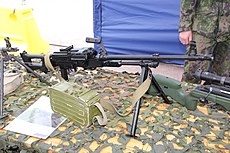















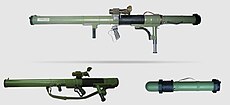



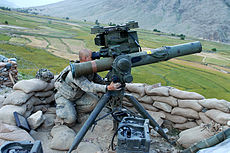



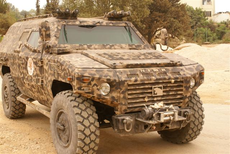






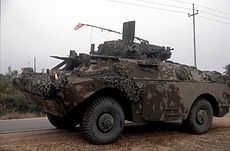





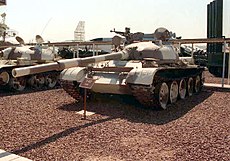



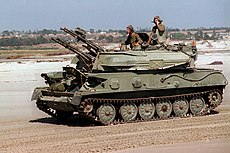

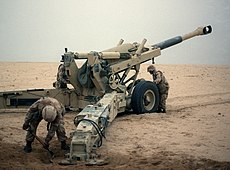
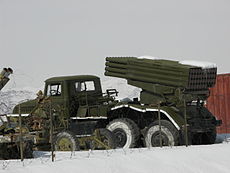
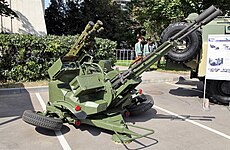


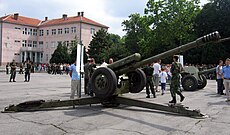
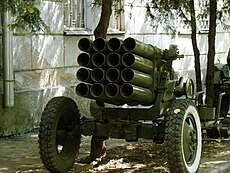





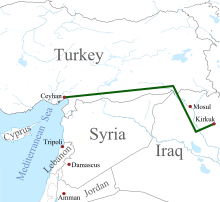



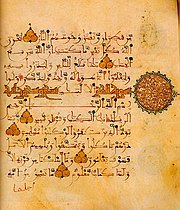



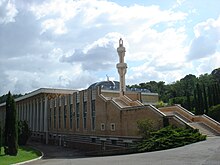

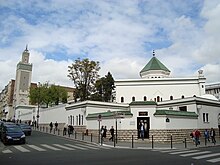


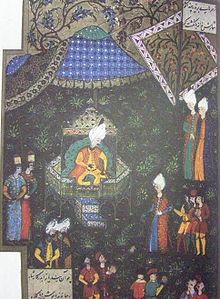
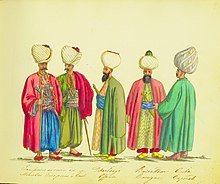






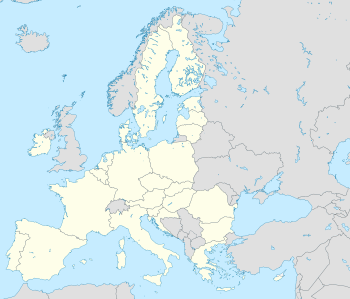
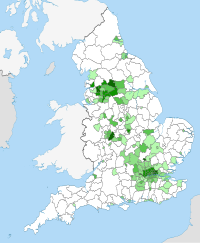


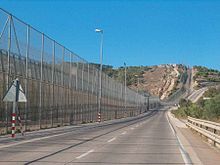


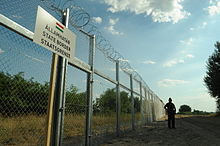



 Well, well, Muslims in Quebec fear that proposed ‘hate speech law’ could potentially get the quran banned and followers of it arrested. Quebec’s proposed anti-hate speech legislation allegedly is a plan to fight Islamophobia, Muslim radicalization and violent extremism, but Muslims have concerns that the proposed bill could backfire.
Well, well, Muslims in Quebec fear that proposed ‘hate speech law’ could potentially get the quran banned and followers of it arrested. Quebec’s proposed anti-hate speech legislation allegedly is a plan to fight Islamophobia, Muslim radicalization and violent extremism, but Muslims have concerns that the proposed bill could backfire.




 The al-Qaeda branch in Somalia released a video Saturday celebrating the September 2013 attack on the Westgate shopping mall in Nairobi, Kenya, that killed 60 people in a four-day siege. In the 66-minute video, al-Shabaab calls for attacks on specific targets in the U.S., Canada, and Britain.
The al-Qaeda branch in Somalia released a video Saturday celebrating the September 2013 attack on the Westgate shopping mall in Nairobi, Kenya, that killed 60 people in a four-day siege. In the 66-minute video, al-Shabaab calls for attacks on specific targets in the U.S., Canada, and Britain.















